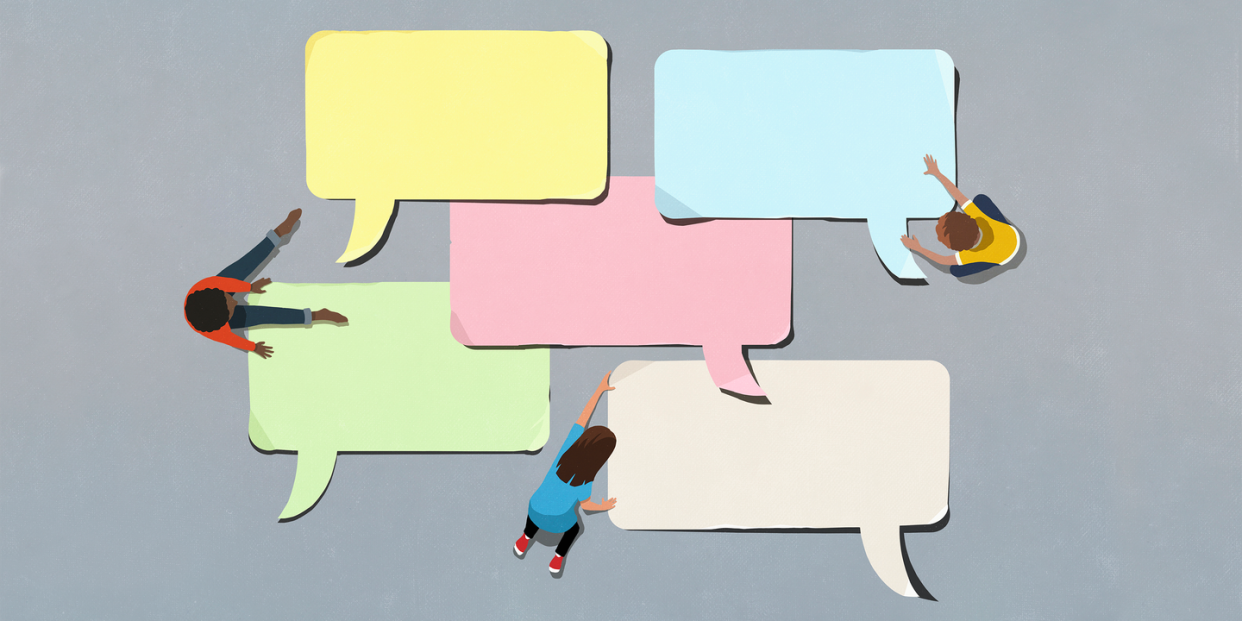5 things to say instead of 'I’m sorry'
A sincere apology is a beautiful thing. It says, “I wronged you, and I take responsibility,” acknowledging the humanity of both the wronged party and the person who made a mistake, as humans do. The problem is when you stop uttering “I’m sorry” only to apologize and start using it as a verbal tic: “Sorry, I’m not clear on this” before you ask a question. “Sorry to bug you” before you interact with someone. “Oh, so sorry…ficus,” when you turn a corner into a potted plant. “We have to apologize for the times when our behavior negatively impacts somebody else,” says etiquette expert Lizzie Post, coauthor (with her cousin Daniel Post Senning) of the new Emily Post’s Etiquette: The Centennial Edition. But when it becomes a default, “it starts to lose its impact or puts us in a position of feeling like we have to apologize for existing in the world.”
If this sounds uncomfortably familiar, by all means, don’t apologize! First, recognize that you’re not alone. Niro Feliciano, a cognitive psychotherapist and author of This Book Won’t Make You Happy, points to a recent study of university students that found that men and women apologize at the same rate—about 81 percent of the time they think they’ve offended someone—but women suspect they’re causing offense much more often. “Our awareness is heightened,” she explains. “If you go back to Adam and Eve, women have been blamed for the wrongdoings of other people for as long as we can remember. We receive mixed messages: Be intelligent but not a know-it-all. That creates an internal barometer where we are sensitive to how we’re perceived and what we do that might create tension in our workplaces, homes, relationships. This is why we’re so quick to say sorry.”
So save the apologies for when you’re truly repenting—whether for spilling wine on someone at a party or committing a deadly sin. In all other scenarios, sub in these phrases:
“Pardon me.”
It’s time to bring back this deliciously Bridgerton phrase, tailor made for minor social inconveniences. You may have cut off someone in the coffee line (or in conversation), or need to squeeze past them to get to your theater seat. Perhaps you didn’t hear a word someone just said. Beg their pardon, not their forgiveness.
“Are you okay?”
You jostled someone on a crowded train or nudged their chair while walking through a restaurant. Instead of immediately telling the person how you feel—“So terribly sorry!”—ask how they feel. “This gives you a more objective perspective on what happened and how it was perceived, instead of assuming and internalizing blame,” says Feliciano. If the potentially injured party has no idea what you’re talking about, a simple “Oh, good—I thought I bumped you” will do the trick. If they reply, “Don’t worry about it; I’m fine,” acknowledging that you did bump into them, now’s the time to pull out a sincere “Sorry about that.”
“Excuse me.”
You want to get someone’s attention, maneuver past a stranger, or jump into a conversation. This phrase gives people a heads up. “I think ‘Excuse me’ has often been delivered in such a not-polite way that it's gotten a bad rap,” says Post. But you can rehab its reputation! Simply smile and say pleasantly, “Excuse me; could I just jump in for a moment?” and the stage is yours.
“After you!”
A variation on “Excuse me,” this ditty is clutch when you and another fine human find yourselves approaching the same doorway, self-checkout machine, or omelet station. There’s no need to apologize for being in the same place at the same time, and if you have a few minutes to spare, this is an amazingly easy act of goodwill.
“Got a minute?”
We’ve all tiptoed to a colleague’s cubicle or office, muttering “I’m so sorry” in a double bid to get their attention and, for some reason, apologize for doing our job. A better approach for all concerned, says Elaine Swann, etiquette expert and founder of the Swann School of Protocol, is to ask permission, not forgiveness. “If you don’t have an appointment, don’t just barge in. Ask, ‘Is this a good time to chat?’ or ‘Can I get five minutes?’” she suggests. Then, and this is key, “Pause and wait for them to respond. Don’t think of this as an opening line for you to continue your statement; you want to pose a true question that gives the individual an opportunity to determine whether or not they can.” Once the question is asked and answered, you’re cleared to get down to business.
You Might Also Like
-
21 of Oprah’s Favorite Things You Can Gift for Under $50
-
9 of Oprah’s Favorite Things for the Busiest People on Your Holiday List
-
9 Wellness Gift Ideas from Oprah’s Favorite Things
Source: Read Full Article
